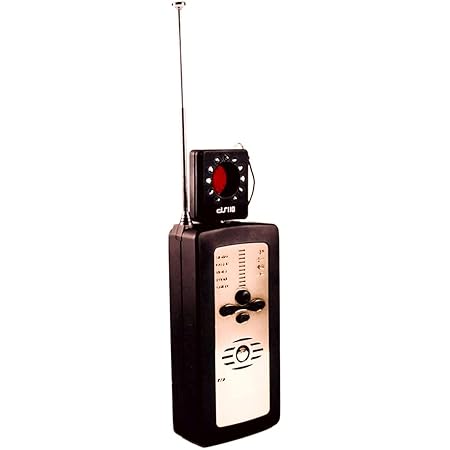In today’s hyper-connected world, privacy concerns are at an all-time high. Travel, in particular, exposes individuals to potential surveillance, whether intentional or unintentional. Hidden cameras, strategically placed in hotel rooms, Airbnbs, or even public spaces, can compromise your personal safety and security. Fortunately, travelers are increasingly aware of these risks and are actively seeking ways to mitigate them. This guide explores the various anti-spy devices travelers utilize to detect and counteract hidden cameras, helping you safeguard your privacy on the road.
Why Worry About Hidden Cameras While Traveling?
The implications of hidden cameras are significant. Imagine the potential for blackmail, identity theft, or the simple violation of your personal space. While many travelers assume this is a concern only for high-profile individuals, the reality is that anyone can be a target. A hidden camera in your hotel room could record sensitive conversations, compromising business deals or personal relationships. In public places, hidden cameras can capture images or videos without your knowledge or consent, leading to potential misuse of your likeness. Protecting your privacy is essential, and taking proactive measures is crucial.
Detecting Hidden Cameras: The Tools of the Trade

The market offers a range of devices specifically designed to detect hidden cameras. These range from simple, affordable options to more sophisticated, professional-grade equipment. Let’s explore some of the most common:
RF (Radio Frequency) Detectors:
RF detectors are perhaps the most widely used anti-spy devices. They work by detecting the radio frequencies emitted by wireless cameras. Many hidden cameras, particularly those transmitting video wirelessly, operate on specific frequencies that these detectors can pinpoint. The advantage of an RF detector lies in its ability to detect devices even if they are disguised or concealed, provided they are transmitting a signal. Look for detectors with a wide frequency range and clear audio or visual indicators to help you pinpoint the source of the signal.
Lens Detectors:

Lens detectors, often handheld, utilize a combination of lenses and LEDs to help users identify the reflective glare of camera lenses. These devices exploit the physical properties of lenses to reveal their presence, even if the cameras are well-hidden. They are particularly useful in detecting cameras that may not be transmitting a wireless signal. Effective use of lens detectors requires careful examination of potential areas, such as electrical outlets, smoke detectors, and even everyday objects that could be concealing a hidden camera.
WiFi & Bluetooth Scanners:

Many modern hidden cameras connect to a Wi-Fi network or use Bluetooth for transmission. Using a dedicated Wi-Fi and Bluetooth scanner allows you to identify any unknown networks or devices connected to your hotel’s or Airbnb’s Wi-Fi, or those that appear to be operating nearby without your knowledge. This process can reveal the presence of connected hidden cameras, although some cameras are designed to circumvent this detection method.
Beyond the Technology: Practical Tips for Privacy
While technology provides valuable tools, adopting proactive habits is equally important for maintaining your privacy:
- Visually Inspect the Room: Before settling in, meticulously check your hotel room or Airbnb. Look for anything out of place, unusual objects, or small devices that might be concealing a camera. Pay close attention to common hiding spots such as smoke detectors, clocks, picture frames, and electrical outlets.
- Cover Potential Hiding Spots: If you suspect a camera might be present, cover potential locations using tape, towels, or other readily available items. This isn’t foolproof, but it provides an extra layer of security.
- Be Mindful of Your Surroundings: In public spaces, be aware of your surroundings and avoid conversations that you would not want recorded.
- Use a VPN: A Virtual Private Network (VPN) encrypts your internet connection, offering additional protection against online surveillance.
- Consider a “Privacy Screen”: For laptops or tablets, a privacy screen can prevent others from seeing your screen from the sides. This is especially helpful in public spaces.
Choosing the Right Anti-Spy Device for You
Selecting the best anti-spy device depends on your specific needs and budget. Consider the following factors:
- Ease of Use: Some devices are more intuitive to operate than others. Choose one that you are comfortable using.
- Range and Sensitivity: For wider detection capabilities, select devices with a broader frequency range and higher sensitivity.
- Portability: If you travel frequently, you’ll want a lightweight and compact device.
- Features: Consider additional features such as audio recording or data logging, which can help document your findings.
- Price: Prices vary significantly, so set a budget before purchasing.
Conclusion: Protecting Your Privacy While Traveling

The use of anti-spy devices is becoming increasingly important for travelers concerned about privacy. These devices, in combination with proactive habits, can help significantly reduce the risk of unwanted surveillance. While no system is completely foolproof, taking proactive measures can offer peace of mind and help safeguard your personal information and privacy while exploring the world.
Remember to research thoroughly before purchasing any anti-spy device and ensure you understand its capabilities and limitations. Prioritizing your security and privacy is essential, and the right tools and awareness can make a real difference in ensuring a safe and secure travel experience.


